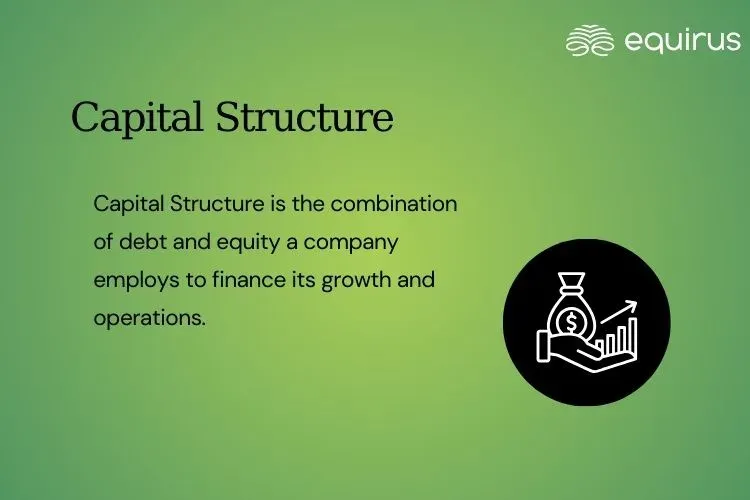Capital Structure

Key Highlights
-
Capital Structure is the combination of debt and equity a company employs to finance its growth and operations.
-
Components of capital structure includes equity and debt capital.
What is Capital Structure?
Capital Structure is the combination of debt and equity a company employs to finance its growth and operations. Simply put, it indicates how a company raises funds—borrowing (debt), issuing shares (equity), or a combination of both.
Components of Capital Structure
1. Equity Capital
-
Common Shares: Held by ordinary shareholders with voting rights.
-
Preferred Shares: Shareholders receive fixed dividends but generally don't have voting rights.
-
Retained Earnings: Profits re-invested in the company rather than paid out as dividends.
2. Debt Capital
-
Short-Term Debt: Loans, overdrafts, or commercial paper due within one year.
-
Long-Term Debt: Bonds, debentures, or term loans due over a few years.
-
Convertible Debt: Debt that can be converted into shares at a later date.
Capital Structure Formula
There is no one fixed formula, but one of the ratios most often used to comprehend capital structure is the Debt-to-Equity Ratio:
Debt-to-Equity Ratio = Total Debt/Total Equity
This indicates how much debt a firm employs in comparison to equity. A ratio of 1 signifies that the firm employs equal proportions of debt and equity.
Capital Structure Example
Assume a firm has:
- ₹30 crore as equity
- ₹20 crore as debt
Its capital structure is:
- Equity = 60%
- Debt = 40%
Why Capital Structure Matters?
1. Risk Management
-
Increased debt translates into increased repayment obligations and increased risk.
-
Increased equity minimizes risk but can dilute ownership.
2. Cost of Capital
-
Debt is less costly (interest is tax-deductible), but excessive increases risk.
-
Equity is costly (dividends are not tax-deductible), but safer.
3. Investor Confidence
- An optimal capital structure demonstrates financial health and sound governance.
4. Business Flexibility
- Firms can finance in a manner best suited to their market environment and objectives.
Optimal Capital Structure
There is no single "one-size-fits-all" optimal structure. The optimal capital structure is the combination of debt and equity that:
-
Reduces the cost of capital overall
-
Maximizes the company’s value
-
Maintains financial stability
Capital Structure vs Financial Structure
| Capital Structure | Financial Structure |
|---|---|
| Includes only long-term debt and equity | Includes all liabilities, short-term and long-term |
| Focused on strategic financing | Broader view of company’s liabilities |
